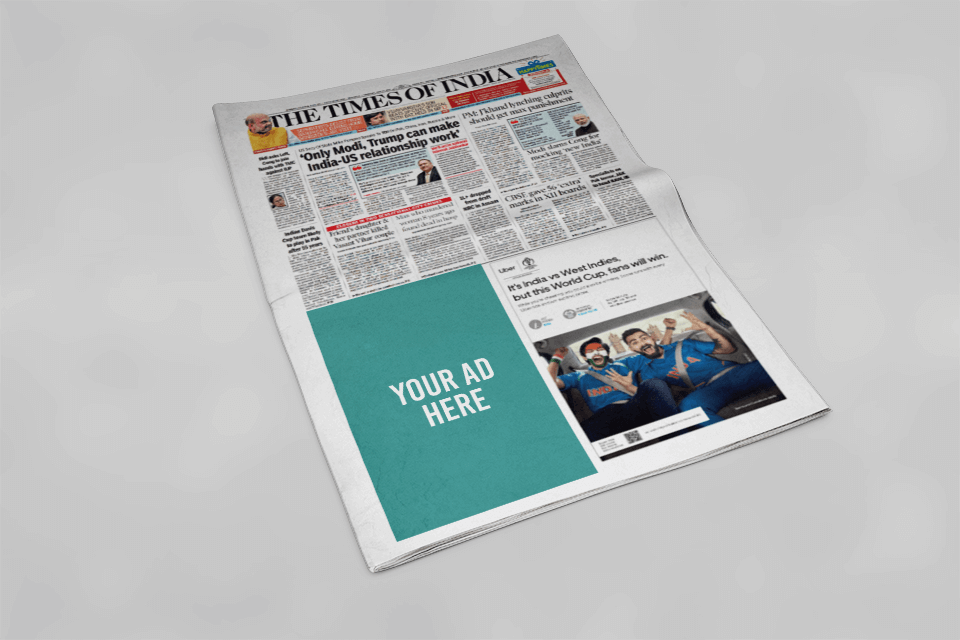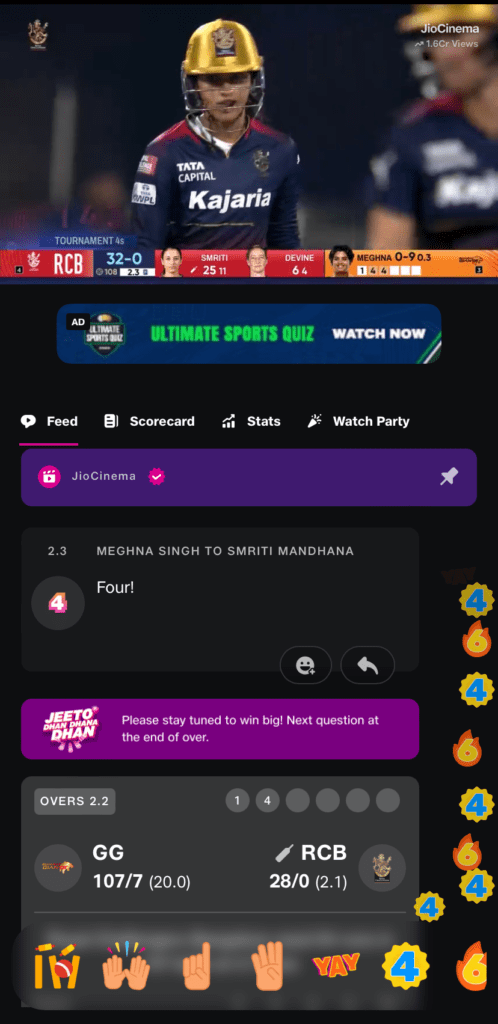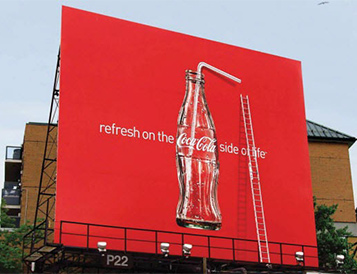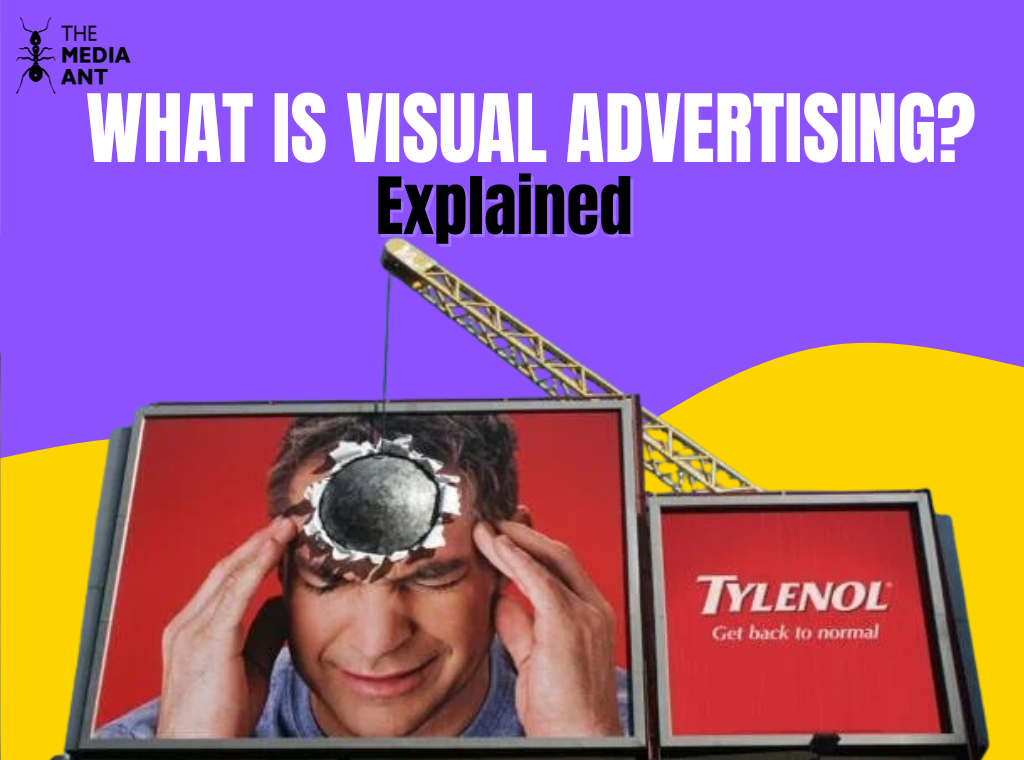What is Visual Advertising?
Visual advertising is the most powerful form of advertising. This brings a lot of relativity to the consumers who consume these ads. It has been seen earlier also that visual forms are the best mediums to reach out to the audience base.
Visual advertising relies on a few essential elements to effectively convey messages. Pictures, videos, and infographics all share a common characteristic: they use images or symbols instead of words to communicate key information. Each of these visual mediums plays a crucial role in engaging audiences and delivering impactful brand messages
However, visual advertising is not solely about the medium used; it’s also about the content within the visuals. Meaningful, accurate, and story-driven images are essential components of any successful visual advertising strategy. These images help viewers better understand the business or brand, evoke emotions, and create memorable experiences.
Moreover, images in visual advertising are not just static representations. They contain various elements that contribute to the overall impact and effectiveness of the message. Factors such as color, focus, distance, subjects, lighting, and composition all come together to create a mood, tone, and situation within the image.For instance, the choice of colors can evoke different emotions and associations, while the focus and composition can direct the viewer’s attention and convey specific messages. The distance and perspective from which the image is captured also play a role in shaping the viewer’s perception and understanding.
Types of visual advertising
1. Print Advertising
One of the most traditional forms of advertising is Print Advertising. This form of advertising is still very relevant and there has been a certain stoppage on the growth of print advertising. But in recent times it has shown significant growth. In terms of Visual Advertising this has been one of the most important mediums.
It encompasses a diverse array of formats, including newspapers, magazines, brochures, posters, and billboards, each offering unique advantages for reaching target audiences.
One of the key strengths of print advertising lies in its tangibility and permanence. Unlike fleeting digital ads that can be easily scrolled past or closed, print ads offer a physical presence that commands attention. Whether flipping through a magazine or walking past a billboard, consumers interact with print ads in a tangible way, often resulting in deeper engagement and retention of brand messages.
Print advertising also offers unparalleled targeting capabilities, allowing marketers to reach specific demographics and niche audiences with precision. By selecting the right publications or locations, advertisers can tailor their messages to resonate with the interests and preferences of their target market, enhancing the effectiveness of their campaigns.
Moreover, print ads offer a sense of credibility and authority that digital ads sometimes lack. Appearing in reputable publications or prominent outdoor locations lends legitimacy to a brand, instilling trust and confidence in consumers.

2. Outdoor Advertising
Outdoor Advertising is one of the most early mediums of advertising. Currently outdoor advertising has different options as digital outdoor mediums have also been introduced and some creative forms are also in parallel positioning. Outdoor advertising has been one of the best mediums to reach out to the audience as once your target audience is out of their home they can see your AD. Outdoor Advertising is a key aspect when you are planning to do a full campaign. Let’s take a glimpse of hope for many outdoor advertising forms.
While hoardings, bus shelter advertising, and auto advertising are among the most recognizable forms of outdoor advertising, the options extend far beyond these conventional methods.
Outdoor advertising can be categorized into four main types:
1. Hoardings
Also known as billboards, hoardings are strategically placed in high-traffic areas like highways or shopping districts to capture the attention of drivers and pedestrians. They provide round-the-clock visibility, making them highly effective for boosting brand awareness.
2. Transit Advertising
Transit Advertising encompasses advertising on public transportation and in transportation hubs such as auto branding, cab branding, metro advertising, and airport advertising.
3. Street Furniture Advertising
Street furniture includes various urban elements like news racks, park benches, and telephone booths. Placed at eye level for foot traffic, these ads are attention-grabbing for pedestrians and commuters alike
4. Non-Traditional Advertising
Beyond the conventional options, there’s a growing array of alternative outdoor media. Examples include walking billboards, pole kiosks, hot-air balloons, sailboats, and mall advertising such as kiosks, standees, cutouts, elevator wraps, and LED screens in cricket stadiums and food courts.
Most Prevalent Types of Advertising Boards
The advertising industry boasts a diverse array of advertising boards tailored to various needs and preferences. Here are some of the most prevalent types:
- Bulletins
- Posters
- Vinyl Billboards
- Painted Billboards
- Digital Billboards
- Mobile Billboards

3. Digital Advertising
One of the most effective and new age Advertising forms is Digital ADs be it social media, OTT or programmatic. These are the most effective AD solutions these days as they provide visibility to the maximum audience at any given point of time. Digital Ads are very crucial for a brand to create effective impact while the AD is running. The two major points are flexibility and precision in digital advertising.
Digital advertising encompasses various formats tailored to different platforms and audience preferences. Here are some common types:
- Search Advertising
- Display Advertising
- Online Video Advertising
- Streaming Media Advertising
- Audio Advertising
- Social Media Advertising
How Do Digital Ads Work?
Digital ads are published through various methods, such as direct purchase from publishers or programmatically through demand-side platforms (DSPs) or supply-side platforms (SSPs). Costs vary by format and may include pricing models like cost-per-click (CPC) or cost-per-mille (CPM). Targeting is precise, matching ads to audiences based on search terms, interests, or behaviors. Metrics like clicks, impressions, and conversion rates measure performance.

4. Broadcast Advertising
Broadcast Advertising is one of the premium yet most effective ways to communicate a brand message. Broadcasting Ads has been a pillar in the Ad industry for a long time. The major plus point is the Ads and how they get made in accordance with consumer behaviors.
Broadcast advertising offers a multitude of opportunities to enhance brand exposure and drive sales across various channels. While television remains a potent medium, integrating broadcast, streaming, and digital advertising into cross-channel campaigns often yields optimal results.
- Television
- Commercials
- Product Placement
- Long-Form Advertising
- OTT Streaming Apps
Broadcast advertising remains pivotal for businesses due to several key advantages:
- Trust & Credibility
- Live Audience Engagement
- Creating a Broadcast Advertising Campaign
- Understand Your Target Audience
- Measure and Iterate

Techniques involved in Visual Advertising
1. Branding and Logos
Crafting a unique brand identity, logos encapsulate a brand’s essence in a single symbol, fostering recognition, trust, and loyalty among consumers.
2. Storytelling
Storytelling weaves narratives that captivate hearts, convey messages, and forge connections, transcending boundaries to evoke emotions and inspire action.
3. Call-to-Action (CTA)
A compelling Call-to-Action spurs action, guiding audiences to the next step in their journey, whether it’s a purchase, sign-up, or engagement, driving meaningful outcomes.
4. Visual Effects
Visual effects elevate storytelling, adding depth, emotion, and immersion to narratives, transforming ordinary scenes into extraordinary experiences that resonate with audiences.
Essential Elements of Visual Ads
1. Images and Graphics
Images and graphics serve as visual anchors, conveying messages, emotions, and information with striking clarity, engaging audiences and enhancing the storytelling experience.
2. Color Scheme
A meticulously chosen color scheme sets the tone, evokes emotions, and reinforces brand identity, creating a cohesive visual language that resonates with audiences and leaves a lasting impression.
3. Typography
Typography shapes perceptions, conveying tone, personality, and message clarity. Through unique font choices and styles, it captures attention and enhances brand identity, ensuring memorable communication experiences.
4. Brand Logo and Identity
A brand’s logo is its visual cornerstone, embodying its essence and values. It’s the beacon of identity, fostering recognition, trust, and loyalty among consumers worldwide.
5. Visual Hierarchy
Visual hierarchy guides attention, organizing elements by importance. Through size, color, and placement, it directs viewers’ focus, creating clarity and emphasizing key messages for impactful communication.
6. Emotional Appeal
Emotional appeal evokes feelings, forging connections that resonate deeply. Through storytelling, imagery, and empathy, it elicits reactions, driving engagement, loyalty, and meaningful action.
7. Relevance
Relevance ensures messages align with audience needs, sparking interest and fostering connection. Tailored content resonates, driving engagement, trust, and meaningful interactions in a dynamic digital landscape.
8. Simplicity
Simplicity distills complexity, conveying clarity and elegance. Stripping away excess, it amplifies impact, guiding understanding and fostering memorable experiences in a cluttered world.
9. Consistency
Consistency maintains coherence, reliability, and trust. Across branding, messaging, and experience, it reinforces identity, builds familiarity, and cultivates lasting connections with audiences.
Examples of Visual Advertising
- Broadcast Advertising
2. Print Advertising

3. Digital Advertising

4. Outdoor Advertising

FAQs on Visual Advertising
Why is visual advertising important in marketing?
Visual advertising creates a long-lasting impression in consumers’ minds as it is one of the strongest mediums to convey a message.
How does visual advertising differ from other forms of advertising?
This form of advertising offers numerous advantages, including creativity and more. Primarily, the concept is conveyed through video synchronized with audio. Consumers are presented with eye-catching visuals, while music enhances the overall experience, resulting in a lasting impact on their minds.
How does visual advertising influence consumer behavior?
Visual advertising is a potent medium, and when brands harness it with the right message, creativity, and precise product descriptions, consumers are quickly influenced. Clear messaging, creativity, and product descriptions positively shape consumer behavior when articulated effectively.
What trends are emerging in visual advertising?
Top 5 trending one’s
- 3D Design
- Video ads are becoming shorter, more authentic, and crisper.
- The Role of AI in Visual Design and Advertising
- Utilization of strong typography as focal points
- Embracing colorful minimalism and blending flat and realistic design
At The Media Ant, we empower all to advertise. Visual advertising is a key aspect of our services, offering a wide range of media options for brands. Any brand seeking to advertise can reach out to us ad@themediaant.com.





